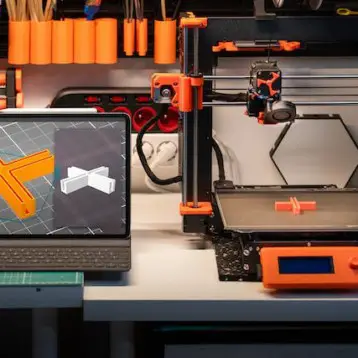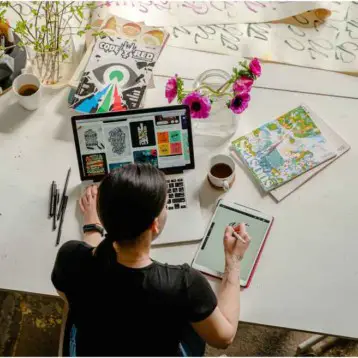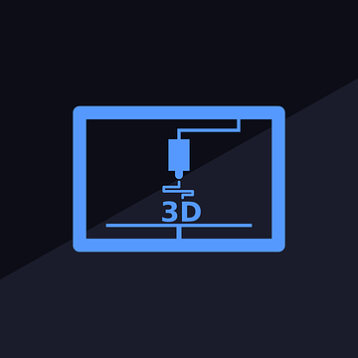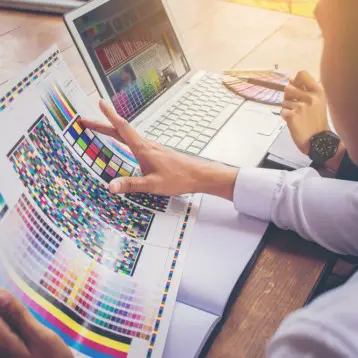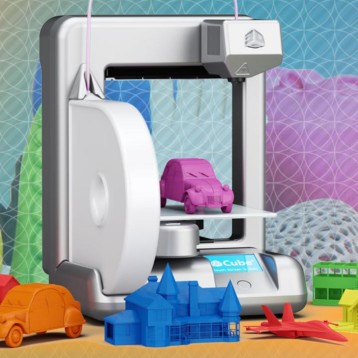The earliest form of printing tool developed by humankind came in the form of cylinder seals made from stones, gems, glass, and ceramics. First produced in Susa in ancient Iran and the Sumerian city of Uruk in Mesopotamia more than 5,500 years ago, these small cylindrical objects bore engravings of written text and scenes depicting people and animals. The cylinders were rolled on pieces of clay tablets so that the engravings could be imprinted on them. These clay tablets, which often served important social or administrative functions, were among the first documents ever produced by our species.
Fast-forward to the 21st century, and one will find that this ancient tool has blossomed and branched out into a dazzling array of modern technologies that are defining people’s lives and shaping the world today. From environmentally sustainable printing techniques to 3D printing technologies that are democratizing manufacturing in ways never seen before, printing has definitely come a long way from its seal and clay beginnings.
As the years go by, however, printing technologies will continue to evolve. What does the future hold for the industry? Here are some exciting new developments and paradigm shifts that we can all look forward to.
The printing process will become more eco-friendly
People nowadays are becoming more aware of environmental issues and the negative impact of the culture of reckless consumption. As this trend continues, we will see market regulations tightening in many jurisdictions all over the world.
New legislations will favor more environmentally sustainable printing practices, including the recycling and remanufacturing of printer cartridges and paper products to divert the majority of unwanted paper, plastic, metal, and chemicals away from the waste stream. Current estimates show that some 400,000 tons of waste can be kept out of our landfills each year if only we remanufactured our printer cartridges instead of producing new ones.
Aside from recycling, the production of more sophisticated ink products that are gentler to the environment will also be undertaken in earnest by future generations. For instance, vegetable-oil based inks and ultraviolet-curable inks will be favored over traditional, solvent-based inks, which release more environmental pollutants. Additionally, food-safe inks will also be developed for the needs of the food and beverage industry.
Explore the exciting future of printing technologies, where advancements are set to redefine how we interact with printed materials. From eco-friendly printing solutions to groundbreaking 3D printing capabilities, the industry is evolving to meet modern demands. Incorporating “vinyl printing and cutting machines” into your business can tap into these trends, offering versatile production options for a variety of applications. This article delves into how these innovations, including conductive inks and photonic printing, will transform printing into a more sustainable, efficient, and customizable process.
3D printing will change our lives
The technology behind 3D printing may seem so wondrous to many people, but one can argue that it is really just the logical next step in the evolution of the ink-on-substrate printing technology. Now, thanks to a process known as additive manufacturing, we are not only able to print flat images on the surfaces of substrates, we can also print three-dimensional objects out of materials like plastic resin. The process involves the successive deposition of layers of this material until the object takes its final shape.
The future implications of this technology are enormous. As it becomes more affordable, more accessible, and more advanced, 3D printing can revolutionize manufacturing by allowing production to take place near or exactly at the point of consumption. Meaning to say, ordinary individuals will be able to manufacture the goods they need, when they want them. Current economic models will shift, as the manufacturing powerhouses that we know of today—whether countries or corporations—will no longer have the distinct advantages that they possess at present.
Another implication is that prototyping and customization in manufacturing will be so much easier. Creativity will be the name of the game, and with prototyping and customization becoming so effortless, innovators will be able to focus on the creating groundbreaking tools and contrivances that will address many of the problems that plague our lives today.
Advanced technologies will bring printing to new heights
Have you ever heard about photonic printing? How about conductive inks? If you haven’t yet, you soon will because advanced technologies such as these will introduce human civilization to the next age of printing.
Photonics, the science of light or photon generation, detection, and control, is currently being applied by innovative organizations that are hoping to develop invisible photonic printing techniques. The technology will be valuable for a variety of applications, including for identification and watermarking purposes, for anti-counterfeiting and anti-forgery endeavors, as well steganography, the practice of hiding messages or information within readable text or visible images.
Conductive inks, on the other hand, have the potential to change the way the printed medium is used for communication, marketing, and advertising. Currently being produced from materials like silver nanoparticles and conductive polymers, these inks are essentially circuits that allow the paper or substrate to become connected to the digital word. Imagine a seemingly ordinary poster having the same kind of capacitive sensing capability like a touchscreen display.
Conductive ink can be used in many other applications, including the production of smart clothing printed with flexible electronic inks, as well as the creation of soft machines, like bendable robots that can be used for search and rescue operations.
If someone ever tells you that printing has had its day and it’s doomed to oblivion in the near future, remember what you read here. Tell those folks that one day, people will actually be 3D printing their own homes and will be exchanging secret love notes printed with invisible photonic ink.


